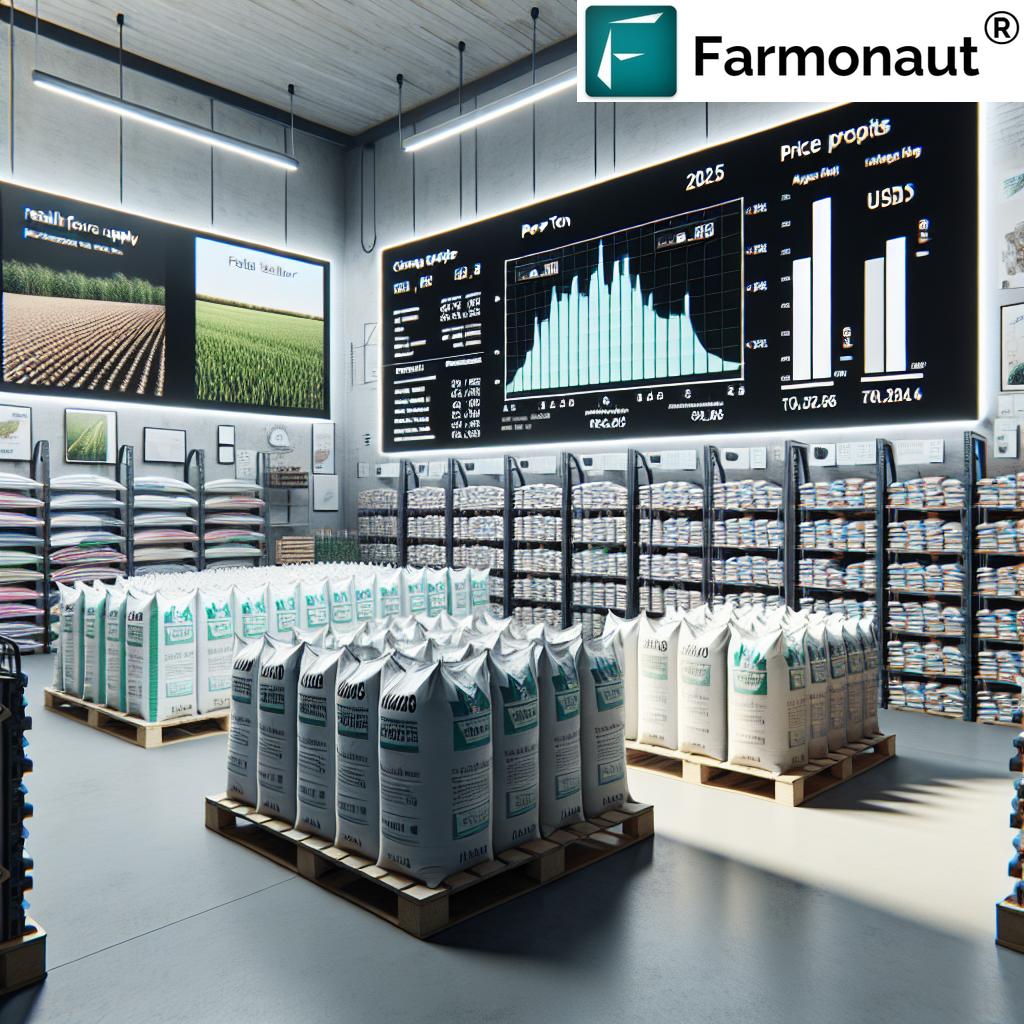Department of Agriculture RIF Plan: 2025 Guide
“California and Hawaii agriculture departments support over 50 climate resilience projects annually to boost sustainable farming practices.”
Introduction
In 2025, the call for sustainable farming, robust food security, and integrated resource management has never been more urgent. Our agricultural sector faces growing challenges—from climate disruptions and water scarcity to market fluctuations and evolving consumer expectations. Within this landscape, state-led programs such as the Department of Agriculture RIF Plan, notably driven by the California Department of Agriculture (CDFA) and the Hawaii Department of Agriculture (HDOA), are setting global benchmarks for resilience and innovation in agriculture.
This comprehensive guide explores how these two state departments are:
- Advancing the infrastructure critical for sustainable farming
- Promoting resilient, climate-adaptive practices
- Driving food and rural economic security
- Utilizing streamlined forms and digital applications for efficient resource management
We will examine in depth the role of programs such as the department of agriculture rif plan, innovative RIF-funded initiatives, and state-specific solutions ensuring continued agricultural viability in both California and Hawaii.
“In 2025, rural food security initiatives in these states are projected to impact more than 1.2 million residents.”
The Role of State Agriculture Departments in Advancing Sustainable Farming and Economic Growth in 2025
State agriculture departments are at the forefront of shaping our collective future in sustainable farming and resource management. In 2025, this role is both transformative and multi-faceted, with departments acting not only as regulatory authorities but also as innovation leaders, environmental stewards, and economic enablers for rural communities.
Whether it is the agriculture department california—one of the nation’s most diverse and productive state agencies—or the distinctly unique hawaii department of agriculture, the mission is being driven by three pivotal outcomes:
- Sustainability & Climate Resilience
- Infrastructure Investment for Food and Water Security
- Streamlining digital forms and supportive programs for farming communities
Through modernized approaches, grant opportunities, and ecological stewardship, departments like cdfa and hdoa are ensuring that agriculture remains resilient and productive for years to come. This is integral for both maintaining a robust market status and supporting local food supply chains.
Focus on California: CDFA’s Innovative Resilience Programs & Department of Agriculture RIF Plan
The National Breadbasket’s Commitment to Resilient, Sustainable Agriculture
California is celebrated as the nation’s—and one of the world’s—key breadbaskets due to its diverse output of fruits, nuts, dairy, and wine. Amid climate volatility and global market fluctuations, the ca dept of agriculture stands out for its strategic, forward-looking approach embodied by the department of agriculture rif plan and related RIF initiatives.
Key Pillars of the RIF Plan
- Resilient Infrastructure Funding: The RIF (Resilient Infrastructure Fund) plan focuses on strengthening infrastructure across California’s agricultural sector, ensuring the state can withstand increased drought, wildfires, and climate stresses.
- Water Management & Irrigation Modernization: Support for efficient water management technologies and irrigation modernization is a cornerstone—critical for maintaining crop health and soil fertility amid recurring droughts.
- Soil Health Projects: Promotion of sustainable practices with an emphasis on soil health improvement bolsters productivity and ensures long-term environmental stewardship and resilience to climate threats.
The department’s innovative programs continually adapt to address emerging challenges, integrating advanced technologies and supporting producers with technical guidance, grants, and regulatory clarity.
Market Access, Quality Assurance, and Disease Prevention
A major priority for the cdfa is pest and disease prevention to safeguard both the quality and reputation of California’s produce for domestic consumption and exports. Rigorous inspection and certification processes ensure market access is maintained while also protecting supply chains from disruption due to emerging threats.
Additionally, the CDFA provides streamlined digital services, facilitating farmer compliance, grant applications, and regulatory processes, making it easier for producers to engage with state-run programs.
Key CDFA Agriculture Programs and RIF-Funded Initiatives
- Efficient Water Management Technology Grants: Modernizing irrigation, optimizing water use, and supporting drought resilience with technological upgrades to existing systems.
- Soil Health Improvement Projects: Promoting cover cropping, conservation tillage, compost use, and organic practices that rebuild soil structure and carbon sequestration.
Learn how carbon footprinting monitoring enables data-driven sustainability in California agriculture. - Regenerative & Climate-Smart Agriculture: Funding initiatives for regenerative farming, carbon farming, crop diversification, and improved input efficiency.
- Streamlined Digital Applications: Online portals and forms that accelerate grant funding, licensing, and compliance, reducing time and barriers for farmers.
By supporting these projects, the ca dept of agriculture ensures California’s status as a global leader in sustainable agriculture, positioning the state to both adapt to and benefit from shifting environmental and market conditions.
Hawaii Department of Agriculture: Strengthening Island Farming and Food Security under the Department of Agriculture RIF Plan
Safeguarding a Unique Island Ecosystem for Agriculture
Hawaii is home to one of the most unique agricultural ecosystems globally, with farming practices shaped by the state’s island geography, distinctive climate, and limited arable land. The hawaii department of agriculture (HDOA) is responsible for protecting and enhancing this fragile system, with strategic efforts prioritized through the department of agriculture rif plan.
HDOA’s Strategic Focus – 2025 and Beyond
- Biosecurity and Pest Management: The department implements rigorous pest exclusion initiatives, rapid response protocols, and ongoing monitoring to prevent the introduction and spread of invasive species that threaten local crops.
- Food Security Initiatives: Efforts emphasize reducing import dependency by supporting diversified crop production (fruits, vegetables, coffee), boosting local supply, and developing resilient food systems.
- Resource Conservation & Sustainability: HDOA supports conservation of native habitats, encourages sustainable farming practices such as agroforestry and organic agriculture, and invests in efficient water management.
The department also simplifies farmer participation with improved hawaii department of agriculture forms, making grants and compliance processes more accessible, especially for small-scale farmers.
Key Initiatives Supported by HDOA
- Local Food Production Grants & Technical Assistance: Streamlined grant application forms encourage diversified crop production, organic farming, and new farm start-ups. Farmers can utilize advanced crop and plantation advisory accessible through digital platforms for improved yields.
- Agroforestry and Conservation: Promotion of agroforestry blends traditional knowledge with modern conservation to protect native species and increase farm resilience.
- Biosecurity & Pest Management Systems: Ongoing investments in border inspections, education campaigns, and response protocols keep crops and the island ecosystem safe.
The HDOA’s holistic approach, rooted in the RIF plan and supportive of digital transformation, demonstrates how agricultural policy can promote not just production, but sustainable community growth, ecological balance, and economic vitality.
Comparative Summary Table – California & Hawaii Agriculture RIF Plan
| State | Initiative/Program Name | Focus Area | Estimated Budget Allocation (USD) | Expected Environmental Impact | Projected Beneficiaries | Year of Implementation |
|---|---|---|---|---|---|---|
| California | Resilient Infrastructure Fund (RIF Plan) | Climate Resilience, Water & Soil Health, Innovation | $350 Million (2025) | – 2.1M metric tons CO2e reduced/year – 1.5M acres sustainably managed |
~950,000 producers, processors, and rural residents | 2025+ |
| California | Water Management Innovation Grants | Drought Resilience, Efficient Irrigation | $50 Million | – 80,000 acres converted to drip irrigation/year – 70B gallons water saved |
Farmers statewide, water agencies | 2025-2026 |
| California | Pest & Disease Prevention Program | Market Quality, Global Access | $35 Million | – Significant reduction in crop quarantines | All market-bound producers | 2025 |
| Hawaii | Island Biosecurity & Quick Response System | Invasive Species Management, Food Security | $20 Million | – Reduced risk of invasive species by 60% | All local farmers, over 150,000 residents directly | 2025-2027 |
| Hawaii | Local Production Grant Program | Resource Conservation, Sustainable Production | $18 Million | – 11,000 new acres under diversified production – Increased local food supply by 23% |
Small/medium producers, rural communities | 2025-2026 |
| Hawaii | Agroforestry & Conservation Enhancement | Ecological Stewardship, Climate Resilience | $9 Million | – 6,500 acres with restored native species – Improved water retention in soils |
Island community farmers | 2025-2027 |
Pivotal Programs: Food Security & Resilient Infrastructure in California and Hawaii
Why Infrastructure and Resource Investment Is Essential
2025 will be a landmark year for bolstering resilient infrastructure across state departments. The department of agriculture rif plan specifically targets:
- The modernization of legacy systems (irrigation networks, transport logistics, storage)
- Investment in efficient water management technologies to counter recurring drought frequency
- Implementation of smart soil improvement projects to ensure long-term productivity and crop health
Such initiatives not only shield against climate-induced stresses (drought, wildfires, rising temperatures)—they unlock new market opportunities and create a stable platform for economic diversification and rural growth.
Explore large-scale farm management solutions for real-time monitoring and resource optimization—crucial for operating efficient, sustainable farms.
Both California and Hawaii also promote grant opportunities for farmers and producers via simple portal interfaces and digital forms, ensuring funding is accessible and efficiently allocated.
Technology & Digital Innovation in Agricultural Management
How Digital Transformation Is Driving Sustainable Farming in 2025
The integration of digital services and advanced technologies is reshaping agricultural management in california and hawaii. Departments are replacing cumbersome paper-based processes with secure online platforms, enabling:
- Fast-track grant and loan applications
- Easy compliance verification and documentation submission
- Real-time communications for regulatory updates, emergencies, or educational outreach
Farmers now have instant access to data and relevant department programs from anywhere, be it for a compliance-related hawaii department of agriculture form or a cdfa permit submission for a market expansion.
Fleet and resource management technology enables producers and cooperatives to optimize farm equipment, reduce inefficiencies, and support sustainable transportation across rural areas.
This digital shift is vital for using resources more effectively—critical for sustainability, regulatory compliance, and rapid adaptation to emerging challenges like pest outbreaks or market shocks.
Streamlined Forms & Applications for 2025: Increasing Accessibility and Impact
Simplification of governmental processes is a core benefit of the modern department of agriculture rif plan. Streamlined forms allow quicker access to crucial funding and technical support in both california and hawaii:
- Online forms for direct grant applications
- Automated submission tracking and notification systems
- Centralized documentation for all regulatory needs
This overhaul lessens the administrative burden on farmers, encourages engagement with sustainability initiatives, and ensures compliance with state and federal regulations.
Notably, hawaii department of agriculture form offers are designed to be easy for small-scale and indigenous producers to use, ensuring equitable access to opportunities and technical programs.
Product traceability powered by digital technologies supports producers and consumers—helping to guarantee authenticity, quality, and safe market access.
Emerging Challenges: Climate Change, Pest Management & the Role of the Department of Agriculture RIF Plan
Addressing 2025’s Most Pressing Agricultural Threats
Departments in both california and hawaii must confront climate change realities that include intense and frequent droughts, shifting weather patterns, prolific pest threats, and evolving global trade environments.
- Climate Resilience Planning: Expansion of projects specifically designed to help producers adapt—infrastructure fortification, early warning systems, adaptive cropping strategies, and water conservation campaigns.
- Pest & Disease Surveillance: Enhanced inspection, digital tracking, and border control to minimize pest outbreaks or spread of diseases undermining food security or export privileges.
- Ecological Stewardship: Emphasis on conservation, reduced chemical inputs, and support for carbon sequestration and biodiversity-focused land management.
Such strategies protect both the economic value of agricultural production and the fragile ecosystems of each state, securing sustainable outcomes for current and future generations.
Farmonaut: Satellite Solutions for Sustainable Agriculture Supporting RIF Plan Objectives
As the shift toward data-driven, climate-resilient agriculture accelerates, satellite technology emerges as a driving force behind strategic resource management and transparency for all stakeholders.
We at Farmonaut are dedicated to democratizing access to advanced satellite-based monitoring and AI-powered decision support for agriculture, infrastructure, and resource sectors. Our platform empowers individual farmers, agribusinesses, and governments to:
- Monitor crop health, growth cycles, and stress in real time (NDVI, soil moisture, field boundaries, etc.)
- Automate resource use analysis for water, fertilizer, or pesticide optimization
- Ensure regulatory compliance and operational efficiency
- Implement transparent, blockchain-based traceability for quality supply chains
We also provide:
- Fleet and resource management for logistics optimization
- Environmental impact tracking (carbon, water, emissions monitoring)
- API and app-based access for seamless scalability—see our API and developer documentation
Accessing affordable, scalable, and easy-to-adopt technology ensures the benefits of the department of agriculture rif plan are realized fully throughout rural and island communities, supporting the broader mission of sustainable food security and ecological stewardship.
Impact on Rural Communities, Economic Growth & Ecological Sustainability
Expanding the role and resource footprint of state agriculture departments impacts not just producers but the fabric of rural communities in california and hawaii. Key benefits include:
- Economic Growth: Increased market access, workforce opportunities, and rural business support programs drive local economies.
- Strengthened Food Security: Supporting diversified local production, reducing import dependency, and stabilizing prices for consumers for over 1.2 million projected beneficiaries.
- Long-term Sustainability: Ecological stewardship ensures agriculture can coexist with fragile island environments and drought-stricken valleys alike.
Combined, these efforts nurture resilient, future-ready food systems—making California and Hawaii models for sustainable agricultural development at the state level.
Future Outlook: Key Opportunities for 2025 and Beyond
Looking forward, both california and hawaii departments of agriculture will need to:
- Expand investment in climate-resilient, digital-first infrastructure, ensuring fast recovery from environmental disruptions.
- Deepen integration of smart technology, remote sensing, and data-driven decision platforms for management and compliance.
- Promote regenerative, carbon-conscious farming practices addressing both productivity and environmental health.
- Support youth and new farmer pathways through education, grants, and outreach with streamlined access to resources.
The collaborative evolution of the department of agriculture rif plan will define new standards in resilient, diversified, and inclusive agriculture, setting the pace for the rest of the US and beyond.
FAQ: Department of Agriculture RIF Plan, 2025
What is the Department of Agriculture RIF Plan?
The Department of Agriculture RIF (Resilient Infrastructure Fund) Plan is a state-driven initiative—primarily in California and Hawaii—for funding infrastructure, resources, and sustainable technology projects that enable the farming sector to withstand climate swings, improve resource management, and boost food security.
How do the California and Hawaii Departments of Agriculture differ in their approach?
The California Department of Agriculture focuses on large-scale infrastructure modernization, water and soil health, and pest/disease management in a diverse, high-output environment. Hawaii’s Department supports unique island farming challenges, placing special emphasis on biosecurity, food import substitution, and conservation of native species.
What can farmers access using streamlined forms and digital applications in 2025?
Farmers can apply for grants, report compliance, submit loan requests, and interact with regulatory programs quickly and efficiently—lowering barriers to funding and technical support.
What role does technology play in modern agricultural programs?
Advanced technologies—such as satellite crop monitoring, digital traceability, and online compliance portals—help track resource use, minimize waste, improve yields, and make managing agricultural operations more transparent and sustainable.
How will these initiatives affect rural communities?
Over 1.2 million residents are estimated to benefit from increased food security, new jobs, stabilized supply chains, and improved local economies in 2025 and beyond.
Where can I find more information on satellite-backed agricultural solutions?
Explore carbon footprinting, traceability, and large-scale crop monitoring for state-of-the-art, affordable sustainability solutions.
Conclusion
The Department of Agriculture RIF Plan stands as a cornerstone of sustainability, innovation, and resilience for state agriculture in 2025. Under the guidance of leading agencies such as the cdfa in california and hdoa in hawaii, producers are empowered with streamlined processes, technical grants, and cutting-edge digital tools that collectively:
- Promote sustainable farming and ecological stewardship
- Drive economic growth across rural communities
- Safeguard food security amid environmental and market fluctuations
Understanding and embracing these programs, along with available technologies and digital resources, is essential for all stakeholders. It is an opportunity not just to comply with modern sustainability standards, but to contribute actively to the robust, resilient future of agriculture in California, Hawaii, and beyond.
Finally, we at Farmonaut remain committed to supporting producers, governments, and organizations world-wide with satellite-driven insights, resource optimization, and the most accessible suite of agritech solutions—shaping the future of sustainable agriculture together.















